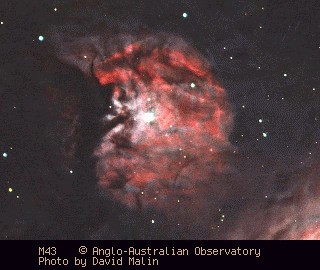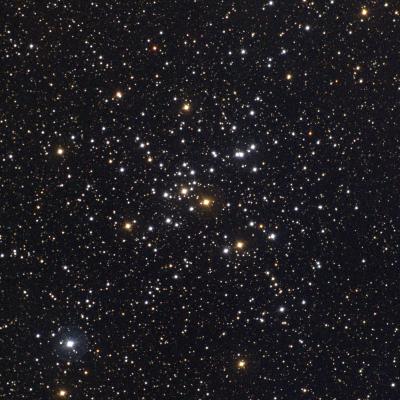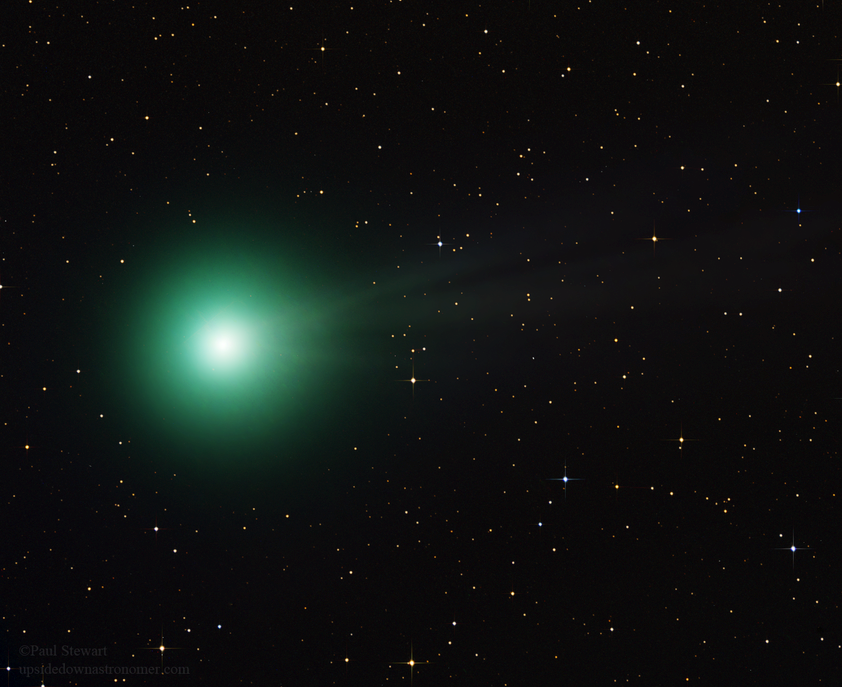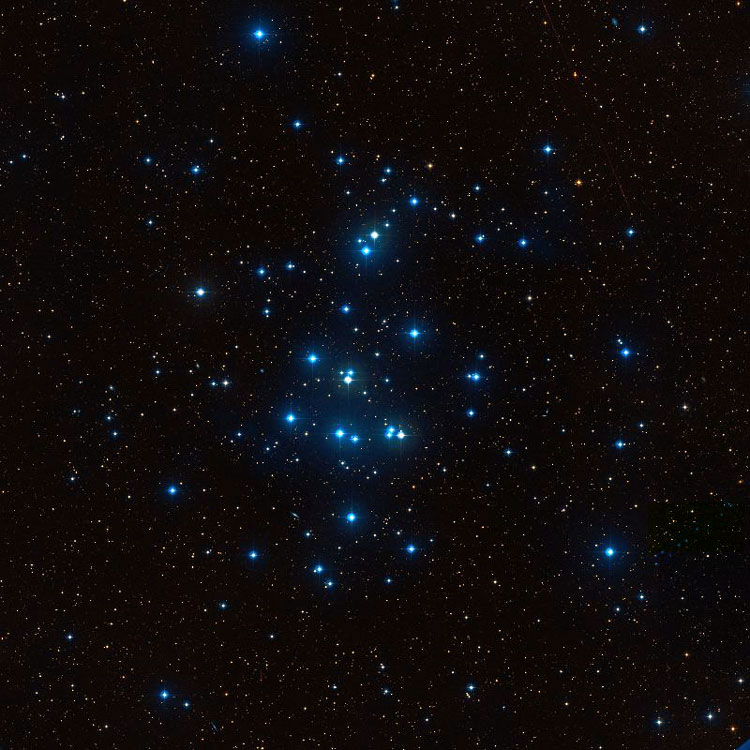
Located in Orion's Sword, this nebula is large and very easy to locate, and even looks great in binoculars. At low power (49x), the cloud of gas was large and green, with two giant arcs of gas flowing away from the central four stars of the Trapezium cluster like the wings of a bird. Many wisps and filaments were visible even at low power and became too numerous to count at higher magnifications. At 305x, I was barely able to make out the E component of the Trapezium cluster, but the breeze was making the telescope too shaky to be able to see the F component.

Separated from M42 by a giant, dark dust lane, M43 looks visually separate from M42, but is actually part of the same complex of gas and dust. It appeared oval and bright, but was hard to observe because the much more impressive M42 was right next to it, demanding attention.

Being fairly close to the bright star Sirius, this cluster is easy to find. It looks great at low power (49x) as a loose cluster of a couple dozen stars of varying degrees of brightness. The differing brightnesses gives this cluster a nice 3-D effect.

The bright moonlight made it impossible to see the comet with the naked eye from my backyard, but I was still able to find it easily in my telescope by visually drawing a line from the V-shaped horns of Taurus through the Pleiades and extending it out into Triangulum. Because of the sky glow, the comet appeared more gray than green, and I could not spot the tail. At 49x, it showed a large, bright core surrounded by a fuzzy disc which quickly faded as you got further away from the core.

This cluster looks glorious, and is so big, it barely fits into the field of view at 49x. Near the center of the cluster is a house-shaped grouping of stars that makes the beehive. Dozens of other stars are sprinkled around the hive like a swarm of bees. Three of the brighter stars appear yellow instead of white, and form an Aries-shaped triangle.

The moonlight and city skyglow were making it difficult to make out the stars in Cancer, so it took me a few minutes to track this one down. M67 is a nice, tight cluster of stars in a more-or-less oval shape. It reminded me of a fingerprint of stars. Pushing up the magnification to 203x, the cluster filled the eyepiece field of view and more stars were visible, maybe 40-50 in all. Most were somewhat faint, but some were brighter than others.
As I was starting to pack my telescope, a bright light caught my eye low in the southern sky. Thinking at first that it was an aircraft, I watched it for a few seconds. It didn't move, so I rushed over to my star atlas to see whether it was a star. Sure enough, it was Canopus! This star was too far south for me to view it in Kansas, so this marks the first time I had ever seen it. It is the second brightest star in the night sky (Sirius is the brightest) and although it was too low to properly view with a telescope, I wanted to mention it here.